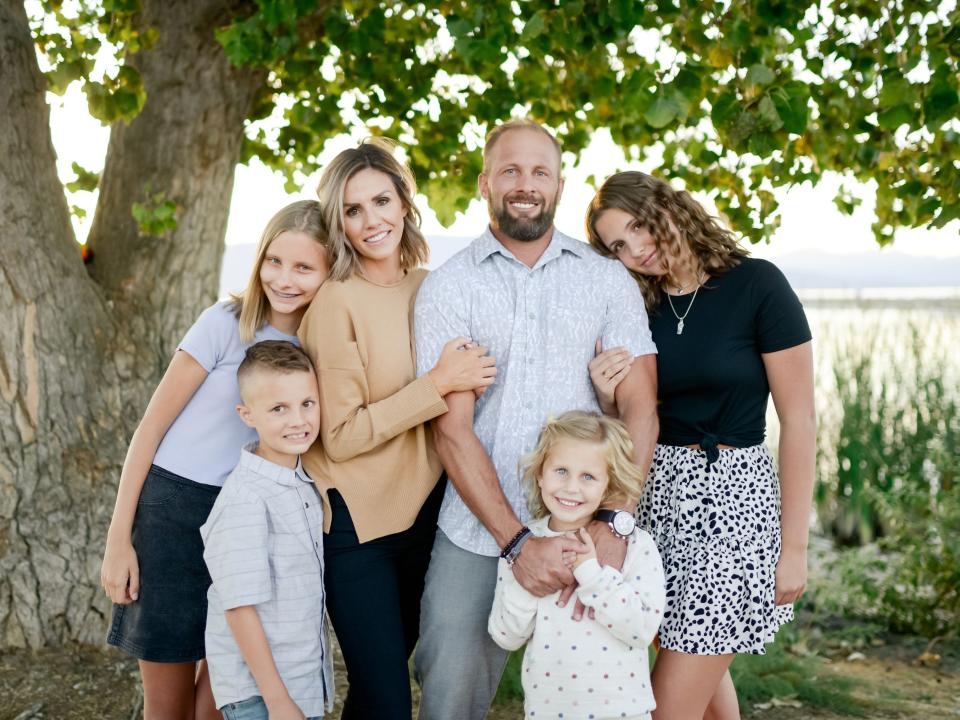
-
“Bootstrapping” real estate strategies like wholesaling have exploded in popularity in recent years.
-
Although they’ve worked in the past, veteran investor Dave Allred says they’re not viable in 2023.
-
Instead, Allred says investors should focus on growing their active income to put more money down.
The old adage, credited to Roman playwright Plautus, goes something like this: You must spend money to make money.
Although the phrase was coined over 2,000 years ago, Dave Allred still believes that it holds just as true for investors today.
A veteran real estate investor, he has in the last two decades amassed a robust portfolio that includes ownership in over 1,250 units across 30 different properties in 15 states, according to documentation verified by Insider. In total, the 42-year-old estimated that his portfolio equity today has grown to over $30 million in value. In 2017, at 36 years old, Allred was able to officially retire from his day job due to his real estate investments and work on growing his portfolio full time.
When Allred was first venturing into real-estate investing nearly 20 years ago, he’d already accumulated a small nest egg through his job in sales at a home-security system company. At the age of 23, Allred purchased his first property — a townhome worth $125,000 — followed the next year by four more townhomes for around $100,000 each through a foreclosure sale. His savings allowed him to purchase all five properties in all-cash deals, with no debt down.
Today, that’s a decision that Allred regrets.
“Buying from the auction, you have to pay all cash. But also back then I was very scared of debt,” he explained to Insider. “I’d always been taught that debt is bad and to avoid debt.”
With more experience under his belt, Allred has also since realized that there’s a difference between bad and good debt, the latter of which he defines as “low-interest, fixed-rate, long-term debt that creates positive cash flow.”
He added: “Debt is a wealth magnifier … That’s the beauty of real estate. Now, I literally want to have as much as I can possibly get, as long as it’s creating positive cash flow.”
As interest rates rise, investors should put more money down
Going hand-in-hand with starting out with no debt is “bootstrapping” real estate, a method where investors put little to none of their personal capital into their investments. In recent years, these strategies, such as wholesaling — where investors make a profit by being the middleman in a real estate transaction — have wildly exploded in popularity.
But according to Allred, these aren’t viable strategies in the long run.
“No money into it, just trying to wholesale, flip, and get creative financing and all that kind of stuff — I think with where the markets are at now, it’s definitely softening and turning a corner,” he explained. “You can’t just bootstrap something and own something without putting a lot of money into it and expect it to have these huge gains.”
“That’s really bad advice,” Allred continued. “I think that when people are trying to push that whole ‘zero money, you don’t need money to get started in real estate’ in today’s environment, that’s usually because they’re trying to sell you something because that’s a very, very slow way to do real estate.”
In the past, macroeconomic tailwinds like low interest rates and easy money meant that investors were able to find success through bootstrapping. According to Allred, investors were able to make money simply by being in the game and having any exposure to real estate.
That’s a huge contrast to today’s much more distressed market. With interest rates and financing costs skyrocketing, Allred says that it makes sense for investors to put more money down upfront on a property, rather than bootstrapping and putting the minimum required amount down. As they put more money upfront, their cost of debt decreases, also increasing their future cash flows.
Allred, who defines himself as a “cash flow investor,” believes that higher interest rates combined with borrowing over 90% can make it almost impossible for investors to receive positive cash flow on their properties.
Market depreciation makes bootstrapping a dangerous game
On top of that, Allred says that if investors aren’t making at least a 20% down payment, they usually have to deal with private mortgage insurance, which he called “one of the biggest rip-offs in real estate,” since it usually adds very little value to the property owner.
In the past, bootstrapping also made more sense because market appreciation could increase an investor’s equity in a property. But Allred believes that today’s housing market won’t be able to naturally appreciate the way it did in previous years, meaning that investors will be forced to deal with slimmer margins all around — or even potential foreclosures.
“If you buy a property and the market goes down and you haven’t put a lot of money into it, then it’s very easy to become upside down in your equity position. And it goes from being an asset to a liability real quick,” he explained.
Rather than trying to adopt a bootstrapping approach, Allred recommends that investors focus instead on first creating enough active income to put real money down towards building a real estate portfolio.
“My advice is to go and figure out how to create enough value in the market to increase your income, so you can have the dry powder to go invest in real estate,” he said.
This story was originally published in February 2023.
Read the original article on Business Insider
Source: finance.yahoo.com
